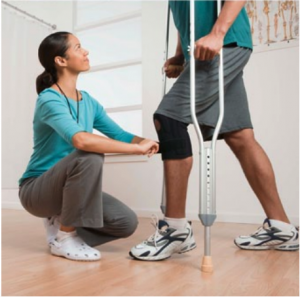Did you know that going to physical therapy could help manage your chronic pain? It can control your pain and help recover from injury or disease. It can help you get better after surgery. It can also help keep you healthy as you get older[1]. Physical therapy is a non-invasive and less expensive alternative to surgery or medications. It is a safe and effective way to treat pain using movement, hands-on care, exercise, and patient education.
Many insurances require physical therapy before they will pay for chronic pain treatment. Physical therapy falls under the “conservative treatment” umbrella that insurances require. Other conservative treatments include medications (NSAIDS, anti-inflammatories, muscle relaxers, etc.), heat, ice, chiropractic treatment, massage, acupuncture, and more. Some people consider conservative treatment as a hoop they have to jump through in order for their insurance to cover injections or surgery. While this may be true in certain situations, physical therapy and other conservative treatments can take care of most, if not all, of your pain and save you from having unnecessary, more invasive treatments.
Physical activity promotes circulation to relieve painful inflammation in joints and muscles. One of the goals of physical therapy according to Tom Watson, the clinical director of Peak Performance Physical Therapy, is “to help chronic pain patients become stronger, because they’re usually weak from not moving.”[2] Plus, studies have shown that physical activity releases brain chemicals[3] called endorphins that help relieve pain, reduce stress and improve your overall mood. A study following 20,000 people over 11 years found that those who exercise on a regular basis experience less pain.[4]
Training
Physical therapists are trained health care professionals. They must have a masters or a doctorate degree in physical therapy. They are licensed by the state where they work. They are trained in physics, anatomy, human movement, and pain management. A physical therapist can make a care plan just for you. An important aspect to keep in mind about physical therapy is that each individual may respond differently to therapy. People have different types of bodies, different patterns of movement, and different habits. Physical therapists and their trained staff can monitor each individual and attempt to correct improper habits and movement patterns.[5]
Techniques used in physical therapy today can be traced back thousands of years. It is believed that many of the techniques and methods used in physical therapy today can be traced back to famed Greek philosopher Hippocrates and, later, Galen. Both were advocates for the use of massage and hydrotherapy dating as far back as 460 BC.[6]
Pain Management
Physical therapy can reduce pain. It can help manage the pain of overuse injuries and some types of arthritis. You may be treated with heat, ice, ultrasound, or stretching exercises. Gentle exercises like walking and swimming can be used too. We call these “low-impact” activities. The less you move, the more pain you’ll experience. Conversely, the more safe, therapeutic activity and exercise you get and the more you learn how to exercise to accommodate your pain, the less pain you’ll feel and the more you’ll be able to function on a daily basis. While physical therapy can be extremely effective against chronic pain, it’s important to understand that physical therapy is part of a combination approach to resolving chronic pain.[7]
Spinal Interventions works hard to provide patients with the best care possible. We understand that even with our treatments, we may not have the total solution. Therefore, we also work to coordinate patient care in conjunction with other specialists such as physiatrists, physical therapists, spine surgeons, rehabilitation facilities, and psychologists.
Post-surgical Rehabilitation
Physical therapy is helpful after some surgeries too. It makes you stronger and more flexible. Your therapist will show you exercises and stretches to help you get better. Physical therapy can actually help the recovery and healing process after a major surgery. This is known as postoperative, or post-surgery, recovery or rehabilitation. There are typically three stages in postoperative rehabilitation. 1. Immediately following surgery, the first stage is when the body is ultimately immobilized as the body goes through a basic healing process. Here, swelling will go down and the initial pain of surgery will subside. 2. The patient’s physical therapist will work with him or her to design a plan involving progressive exercises that will begin to strengthen the body, restoring the patient’s range of motion and overall stability. 3. With time, the patient will be able to return to their normal, pre-surgery level of physical activity, whatever that may have been for them. This is the ultimate goal of postoperative rehabilitation, and physical therapy as a whole.[8]

Alternative to Surgery and Medication
Physical therapy may improve some health problems without surgery or medicine. It helps control pain that goes on for a long time, also known as chronic pain. Low-impact activities are good for this. Water walking, swimming, and flexibility exercises relieve pain and stiffness in your joints. A physical therapy plan helps keep a chronic condition from getting worse. This can help you avoid surgery.
Don’t let chronic pain interfere with your life! If you’re dealing with chronic pain, you know how debilitating it can be. Don’t let pain keep you from doing the things you love. Take the first step to living pain free and call Spinal Interventions today at (801) 223-4860 for a consultation.
References
[1] https://viewmedica.com/vm/index/brochure/6793/physicaltherapy/en
[2] https://www.everydayhealth.com/pain-management/physical-activity-and-therapy.aspx
[3] Exercise and Depression: Endorphins, Reducing Stress, and More, WebMD, webmd.com/…sion/guide/exercise-depression
[4] https://www.moveforwardpt.com/resources/detail/how-physical-therapists-manage-pain
[5] https://www.webmd.com/back-pain/guide/physical-therapy-and-back-pain#1-2
[6] https://www.classicrehabilitation.com/blog/5-interesting-facts-about-physical-therapy/
[7] https://www.everydayhealth.com/pain-management/physical-activity-and-therapy.aspx
[8] https://burleyphysicaltherapy.com/post-surgery-rehabilitation/




